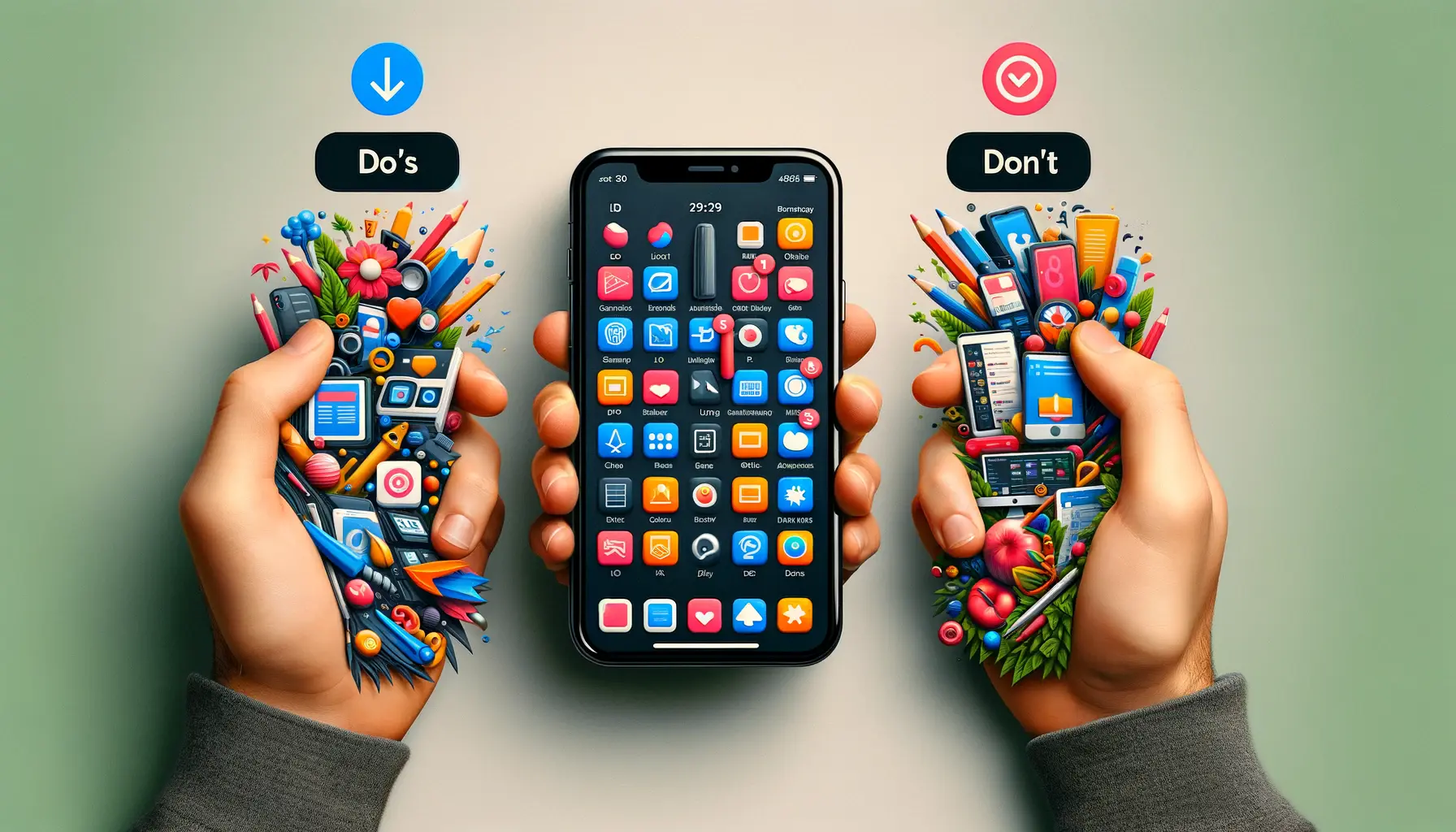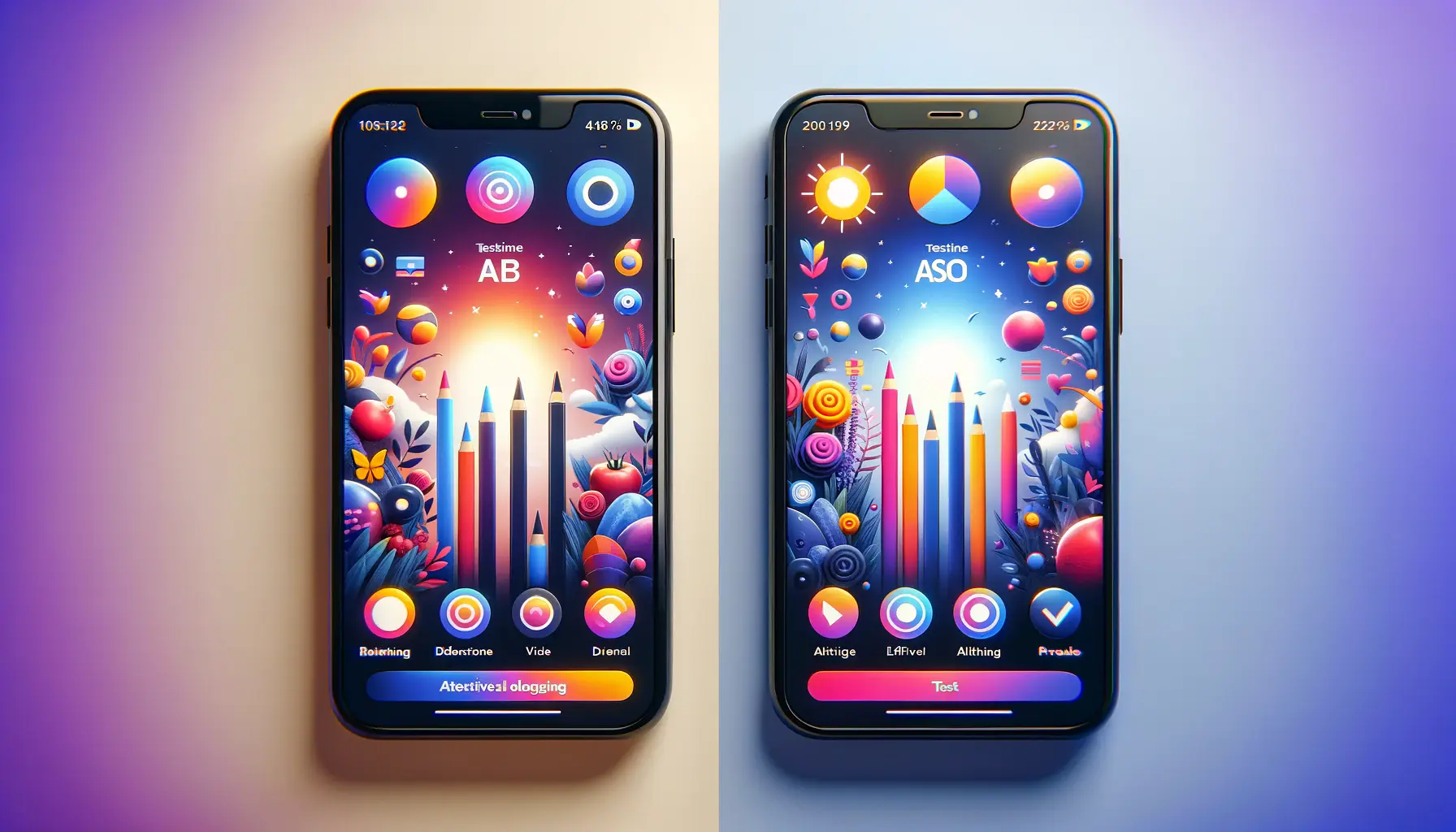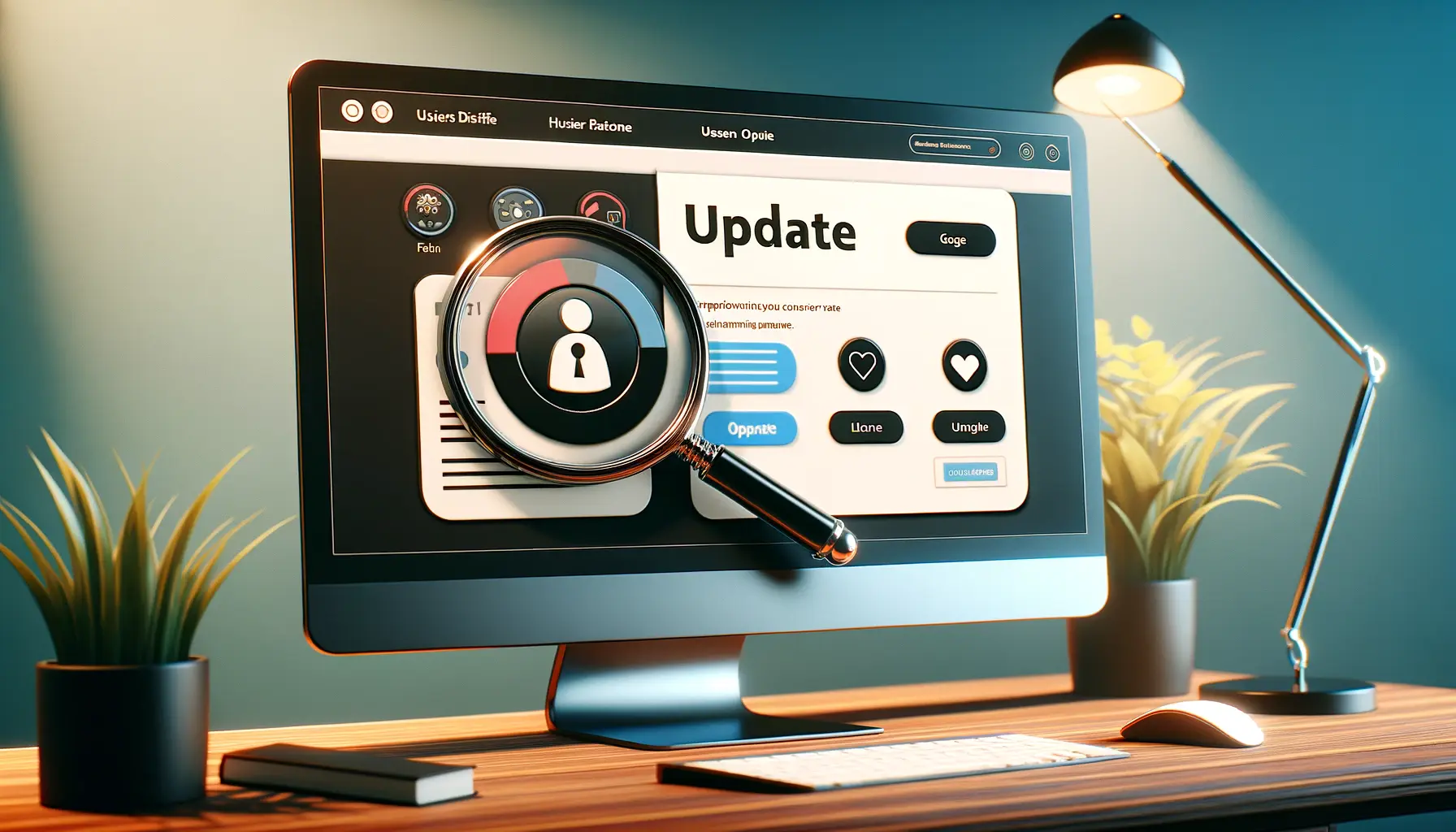Welcome to the ultimate guide on App Store Optimization (ASO) Screenshot Guidelines, a critical aspect for developers and marketers aiming to enhance their app’s visibility and user engagement in the competitive digital marketplace.
Crafting compelling screenshots is not just about showcasing your app’s features; it’s an art that combines creativity with strategic planning.
This guide will delve into the do’s and don’ts of ASO screenshots, ensuring your app stands out from the rest.
With the main keyword “Guidelines” steering our focus, we’re here to navigate the intricate details that make ASO screenshots a powerful tool for marketing your app.
Screenshots are often the first interaction potential users have with your app, making them a pivotal element in the decision-making process.
By adhering to effective guidelines, you can significantly impact your app’s success, driving downloads, and fostering a positive first impression.
- Understanding ASO Screenshot Importance
- Key Principles for Effective ASO Screenshots
- Best Practices for Capturing ASO Screenshots
- Common Mistakes to Avoid in ASO Screenshot Creation
- Leveraging Visual Elements in ASO Screenshots
- Optimizing Screenshots for Search Visibility
- Measuring the Impact of ASO Screenshot Optimization
- Engaging Users with Creative ASO Screenshot Strategies
- Maximizing App Success with Strategic ASO Screenshot Guidelines
- Embracing Best Practices for Enduring Impact
- The Journey Towards Optimization Never Ends
- Conclusion: The Art and Science of ASO Screenshot Optimization
- ASO Screenshot Guidelines FAQ
Understanding ASO Screenshot Importance
Before diving into the specifics, it’s crucial to understand why ASO screenshots are so important.
In the realm of app stores, where countless apps vie for attention, your screenshots act as billboards, enticing users to explore your app further.
They communicate your app’s value proposition and functionality at a glance, making them indispensable tools for conversion optimization.
Screenshots that effectively convey the app’s benefits and features can dramatically increase conversion rates, making it essential to leverage them wisely.
This engagement can lead to higher rankings in app store search results, further amplifying your app’s reach.
Key Principles for Effective ASO Screenshots
Creating effective ASO screenshots involves more than just capturing random screens from your app.
It requires a thoughtful approach that highlights your app’s best features while engaging potential users.
The first two screenshots are particularly crucial, as they’re most likely to be seen by users browsing through the app store.
These screenshots should encapsulate the essence of your app, showcasing its core functionality and unique selling points.
It’s also important to consider the visual appeal of your screenshots.
This means using high-quality images, engaging layouts, and clear, concise text annotations where necessary.
Remember, your screenshots should tell a story – the story of what users can achieve by downloading your app.
By focusing on benefits rather than features, you can create a more compelling narrative that resonates with your target audience.
Optimizing Screenshot Design
The design of your ASO screenshots plays a pivotal role in capturing users’ interest.
This includes the use of vibrant colors, legible fonts, and a layout that guides the viewer’s eye through the key features of your app.
In some cases, incorporating lifestyle imagery can help potential users envision how the app fits into their daily life, enhancing the perceived value of your app.
Another aspect to consider is the orientation of your screenshots.
Depending on your app’s primary usage scenario, you may choose between portrait or landscape screenshots.
Games, for example, might benefit from landscape screenshots that provide a wider view of the game environment, while productivity apps may opt for portrait screenshots to highlight specific features or workflows.
Incorporating User Feedback in Screenshots
Listening to your users can provide invaluable insights into what aspects of your app to highlight in your screenshots.
User reviews and feedback can reveal what features are most appreciated or what benefits are most impactful.
Incorporating this feedback into your screenshot design can help ensure that your screenshots speak directly to the needs and desires of your potential users.
Additionally, A/B testing different sets of screenshots can uncover what resonates best with your audience, allowing you to optimize your app’s visual presentation for maximum impact.
This iterative process can significantly improve your app’s conversion rates, making your ASO efforts more effective and your app more successful.
Best Practices for Capturing ASO Screenshots
When it comes to capturing the perfect ASO screenshots, there are several best practices you should follow to ensure your app’s visuals are not only appealing but also effective in conveying your app’s value.
By adhering to these practices, you can significantly enhance the appeal of your app to potential users.
Highlighting Core Features
Focus on highlighting the core features of your app that differentiate it from competitors.
Each screenshot should serve a distinct purpose, showcasing a specific benefit or feature that makes your app valuable to the user.
This targeted approach helps potential users quickly grasp what your app offers and why it’s worth their time.
Consider the user’s perspective: What would you want to know or see if you were learning about the app for the first time?
- Use annotations and captions to briefly describe the feature or benefit shown, making sure the text is large enough to be easily read on mobile devices.
Consistency in Visual Style
Maintaining a consistent visual style across all your screenshots is crucial.
This consistency helps build brand recognition and ensures a cohesive user experience.
Choose a color scheme, font style, and layout that align with your app’s design and branding.
- Ensure that the screenshots flow naturally, telling a compelling story about your app’s user experience.
- Avoid clutter and overcrowding in your screenshots. Simple, clean designs are often the most effective at communicating value quickly and clearly.
Localization of Screenshots
For apps targeting multiple markets, localizing your screenshots can significantly increase their effectiveness.
This means adapting your screenshots to reflect the language and cultural nuances of each target market.
- Research cultural preferences and trends to ensure your visuals resonate with local users.
- Translate text annotations and captions into the local language, and consider using images that reflect local customs or lifestyles.
Optimizing for Different Devices
App stores require screenshots for different device sizes and resolutions.
It’s essential to optimize your screenshots for each device type, ensuring they look great no matter where they’re displayed.
- Create a set of screenshots for each major device type, including smartphones, tablets, and wearables, if applicable.
- Pay attention to the specific resolution and aspect ratio requirements for each app store and device type. This ensures your screenshots display correctly without being cropped or distorted.
Utilizing A/B Testing
A/B testing different screenshot variations can provide valuable insights into what visuals perform best.
By experimenting with different designs, layouts, and captions, you can refine your screenshots to maximize their impact on your app’s conversion rate.
- Test one variable at a time (e.g., layout, caption text, image content) to clearly understand what influences user engagement.
- Analyze the performance data to make informed decisions about which screenshot variations to implement permanently.
Common Mistakes to Avoid in ASO Screenshot Creation
Crafting the perfect ASO screenshots is as much about avoiding mistakes as it is about following best practices.
Some common pitfalls can significantly hinder your app’s ability to attract and convert potential users.
By steering clear of these errors, you can ensure your screenshots effectively contribute to your app’s ASO strategy.
Ignoring Screenshot Hierarchy
The order in which your screenshots appear is crucial.
The first few screenshots are the most likely to be seen by potential users, so they must highlight your app’s most compelling features.
A common mistake is burying key features in later screenshots, which may never be viewed by the majority of users.
- Place the most impactful screenshots first, ensuring they immediately grab attention and communicate value.
- Consider the user journey and how each subsequent screenshot can build on the narrative established by the first.
Overloading Screenshots with Text
While captions can be helpful, overloading your screenshots with text can overwhelm users and detract from the visual appeal.
Screenshots cluttered with text can be hard to read and may cause potential users to skip over them entirely.
- Use text sparingly, focusing on short, impactful phrases that enhance the visual message.
- Ensure any text is legible across all device sizes, particularly on smaller screens.
Using Low-Quality Images
The quality of your screenshots reflects the quality of your app.
Using low-resolution images or poorly composed screenshots can give the impression that your app is of low quality, discouraging downloads.
- Always use high-resolution images that are clear, crisp, and professionally presented.
- Avoid pixelation, awkward cropping, or aspect ratio issues that can arise from using non-optimized images.
Failing to Update Screenshots
As your app evolves, so should your screenshots.
Failing to update screenshots after app updates or redesigns can lead to a disconnect between user expectations and the actual app experience.
This mistake can frustrate new users and lead to negative reviews.
- Regularly review and update your screenshots to reflect new features, design changes, and user interface improvements.
- Consider seasonal updates or special events as opportunities to refresh your screenshots and re-engage potential users.
Neglecting the Power of Storytelling
Screenshots that simply showcase the app’s interface without context or narrative can fail to convey the full value of the app.
Storytelling through your screenshots can create a more engaging and memorable experience for potential users.
- Use a sequence of screenshots to tell a story that highlights how users can benefit from your app in real-life scenarios.
- Incorporate elements of emotion, humor, or achievement to make your screenshots more relatable and compelling.
Leveraging Visual Elements in ASO Screenshots
In the quest for creating engaging and effective ASO screenshots, the strategic use of visual elements plays a pivotal role.
The right combination of colors, typography, and imagery can significantly influence user perceptions and decision-making processes.
By thoughtfully incorporating these elements, you can craft screenshots that not only captivate users but also communicate your app’s unique value proposition clearly and effectively.
Color Psychology and Branding
Color is a powerful tool in visual communication, capable of evoking emotions and conveying messages without words.
When selecting colors for your screenshots, consider both the psychological impact of different hues and their alignment with your brand identity.
This consistency in color use reinforces brand recognition and can influence users’ feelings towards your app.
- Choose colors that evoke the desired emotional response associated with your app, such as excitement, trust, or creativity.
- Ensure that the color palette complements your app’s interface and branding for a cohesive and professional appearance.
Typography That Talks
Typography is another critical aspect of your screenshots’ visual design.
The right font can enhance readability, reinforce your app’s tone, and make your key messages stand out.
It’s essential to choose typography that aligns with your app’s character while ensuring that it remains legible across various devices and screen sizes.
- Select fonts that reflect the personality of your app—whether it’s friendly and casual or sleek and professional.
- Avoid using too many different fonts, which can create visual clutter and dilute your message. Stick to one or two complementary fonts for consistency.
Imagery That Tells a Story
The images used in your screenshots should do more than just display your app’s interface; they should tell a story about the experiences and outcomes your app enables.
Utilizing imagery that depicts relatable scenarios or outcomes can help potential users visualize the value your app brings to their lives.
- Consider using in-app visuals that showcase real-world usage scenarios, highlighting how users can benefit from your app.
- Include images of people interacting with your app if it enhances the story you’re trying to tell and makes the app experience more relatable.
Remember, the goal of incorporating visual elements in your ASO screenshots is not just to decorate but to communicate. Each visual decision should be purposeful, enhancing the user’s understanding of your app and encouraging them to take the next step.
Optimizing Screenshots for Search Visibility
While the primary function of ASO screenshots is to visually represent your app’s features and appeal, their impact extends beyond mere aesthetics.
Properly optimized screenshots can also enhance your app’s search visibility within the app stores, playing a critical role in ASO strategy.
Incorporating SEO principles into your screenshot optimization can lead to better search rankings and increased visibility among your target audience.
Utilizing Keywords in Captions and Annotations
Textual elements within your screenshots, such as captions and annotations, provide an excellent opportunity to incorporate relevant keywords.
By doing so, you can improve your app’s search visibility without compromising the visual quality of your screenshots.
However, it’s crucial to strike the right balance, ensuring that any text remains clear, concise, and visually integrated.
- Identify keywords that are highly relevant to your app’s features and benefits, focusing on those most likely to be used by your target audience in their search queries.
- Integrate these keywords naturally into captions and annotations, avoiding keyword stuffing which can detract from the user experience.
Reflecting User Intent in Visuals
The imagery and themes presented in your screenshots should closely align with the search intent of your potential users.
This means understanding what users are looking for and reflecting those needs and desires in your visual content.
By aligning your screenshots with user intent, you can attract more qualified traffic to your app listing.
- Research and analyze the types of queries your target audience uses to find apps like yours, and tailor your screenshots to address these queries visually.
- Showcase features, benefits, or scenarios that directly respond to common user needs, making your app more relevant and appealing to those conducting searches.
Screenshots optimized for search visibility not only attract more viewers but also contribute to higher engagement rates. By incorporating SEO best practices into your screenshot design, you can enhance your app’s overall ASO performance, leading to greater visibility and success in the app stores.
Measuring the Impact of ASO Screenshot Optimization
Understanding the effectiveness of your ASO screenshot optimization efforts is crucial for continuous improvement and success in the competitive app market.
By measuring the impact of your ASO screenshots, you can gain insights into what works, what doesn’t, and how to refine your strategy for better performance.
This process involves analyzing key performance indicators (KPIs) and leveraging analytics tools provided by app stores and third-party platforms.
Key Performance Indicators to Monitor
To assess the effectiveness of your ASO screenshot optimization, several KPIs can provide valuable insights.
Monitoring these metrics can help you understand how your screenshots influence user engagement and conversion rates.
- Conversion Rate: The percentage of users who view your app listing and then proceed to download your app. An increase in this rate can indicate effective screenshots.
- Click-Through Rate (CTR): For apps that use paid advertising, CTR measures how often users who see your ad end up clicking on it. High-quality screenshots used in ads can improve CTR.
- Bounce Rate: The rate at which users leave your app listing without engaging further. A lower bounce rate may suggest that your screenshots are effectively capturing user interest.
Leveraging Analytics Tools
Both the Apple App Store and Google Play Store offer analytics tools that allow developers to track the performance of their app listings, including the impact of screenshots.
Additionally, third-party ASO tools provide more detailed analytics, including A/B testing capabilities to experiment with different screenshot variations.
- Utilize app store analytics to monitor conversion rates and other relevant metrics before and after making changes to your screenshots.
- Consider using third-party ASO tools for more in-depth analysis and to conduct A/B tests on different screenshot designs, layouts, and captions.
The ultimate goal of measuring the impact of ASO screenshot optimization is to refine your approach based on data-driven insights. By continually analyzing performance and making informed adjustments, you can enhance your app’s visibility, attract more users, and achieve greater success in the app stores.
Engaging Users with Creative ASO Screenshot Strategies
Engaging potential users through creative ASO screenshot strategies can significantly enhance your app’s visibility and attractiveness.
In today’s competitive app marketplace, standing out requires more than just showcasing your app’s features.
It demands a strategic approach to visual storytelling that resonates with your target audience and compels them to download and engage with your app.
Let’s explore some innovative strategies to elevate your ASO screenshots.
Interactive and Dynamic Screenshots
With technological advancements, app stores may eventually support more interactive and dynamic content.
Anticipating and preparing for this shift can give you a competitive edge.
Imagine screenshots that users can swipe, tap, or even interact with in a limited fashion, providing a more immersive preview of your app.
While this functionality is not yet standard, envisioning future possibilities is crucial for staying ahead.
- Research and experiment with interactive elements that could be integrated into your app’s presentation within the app stores, even if it’s just conceptual at this stage.
- Stay updated with app store guidelines and technological advancements to quickly adapt your ASO strategy when new features become available.
Leveraging Social Proof
Incorporating elements of social proof in your screenshots, such as user reviews or awards, can significantly boost credibility and trust.
Seeing that others have had positive experiences with your app can influence decision-making for potential users browsing the app store.
- Select positive user testimonials or accolades your app has received and integrate them creatively into your screenshot designs.
- Ensure that these elements are visually appealing and do not overwhelm the core message of the screenshots.
Seasonal and Event-Based Updates
Updating your screenshots to reflect seasonal events, holidays, or relevant global happenings can make your app listing feel more dynamic and engaging.
This approach not only keeps your app relevant but also demonstrates to users that you are actively updating and improving the app.
- Plan a schedule for updating your screenshots around major holidays, seasons, or events that resonate with your target audience.
- Use these opportunities to showcase how your app can be particularly useful or enjoyable during these times.
Embracing creativity in your ASO screenshot strategies not only differentiates your app from competitors but also builds a deeper connection with potential users. By continuously exploring new and innovative approaches, you can captivate your audience, increase downloads, and foster lasting engagement with your app.
Maximizing App Success with Strategic ASO Screenshot Guidelines
In the vast and ever-expanding universe of mobile apps, standing out is a monumental task.
App Store Optimization (ASO) has emerged as a beacon for developers and marketers aiming to navigate through the crowded marketplace.
At the heart of ASO lies the power of screenshots—silent yet persuasive storytellers that capture the essence of your app.
This article has journeyed through the nuances of creating impactful ASO screenshots, highlighting the importance of strategic design, optimization, and continuous evaluation.
By adhering to the guidelines discussed, developers can significantly enhance their app’s visibility, appeal, and ultimately, its success.
Embracing Best Practices for Enduring Impact
The creation of ASO screenshots must be a blend of art and strategy.
From showcasing core features and maintaining visual consistency to localizing content and optimizing for different devices, each aspect plays a pivotal role in attracting and engaging potential users.
Creative strategies, including interactive elements and leveraging social proof, further amplify the effectiveness of screenshots, making your app listing more compelling.
The integration of keywords within captions and a deep understanding of user intent also contribute to enhancing search visibility, making your app easier to discover.
The Journey Towards Optimization Never Ends
ASO is not a one-time effort but a continuous journey of improvement and adaptation.
Measuring the impact of your screenshots through key performance indicators and leveraging analytics tools are essential steps in understanding what resonates with your audience.
This data-driven approach allows for informed decisions, helping refine your strategies for better engagement and conversion rates.
The ever-evolving digital landscape demands that developers stay ahead of trends, anticipate changes, and innovate continuously to keep their apps relevant and appealing.
- Monitor and analyze the performance of your ASO screenshots regularly.
- Experiment with new designs, layouts, and messaging to find what best captivates your target audience.
- Stay updated with app store guidelines and technological advancements to leverage new opportunities for engagement.
Conclusion: The Art and Science of ASO Screenshot Optimization
ASO screenshot guidelines serve as a roadmap for navigating the competitive app landscape.
By meticulously crafting, optimizing, and evaluating your screenshots, you can significantly improve your app’s visibility and user engagement.
Remember, the most successful apps are those that evolve with their audience, constantly seeking new ways to connect and communicate their value.
In the realm of app store optimization, screenshots are not just images; they are gateways to discovery, engagement, and success.
Let your screenshots tell a story that compels users to embark on a journey with your app, creating lasting impressions and fostering meaningful interactions.
Boost your mobile app's success with our guaranteed App Store Optimization (ASO) service. Leave it to the experts!
ASO Screenshot Guidelines FAQ
Explore frequently asked questions about ASO Screenshot Guidelines to enhance your app’s presence in the app store effectively.
ASO screenshots visually communicate your app’s functionality and appeal, significantly influencing user download decisions.
It’s recommended to use the maximum allowed by the app store, often 5-10, to showcase varied features and benefits.
Screenshot sizes vary by device; always refer to the latest app store guidelines for specific dimensions and requirements.
While screenshots themselves don’t directly affect rankings, they can improve conversion rates, indirectly influencing visibility.
Yes, localizing screenshots for different markets can significantly increase relevance and conversion rates globally.
Update screenshots with major app updates, feature additions, or to reflect changing user trends and preferences.
Captions can clarify context and highlight features, but they should be concise and not detract from the visual appeal.
A/B testing different designs and layouts can identify which screenshots resonate most with your target audience.











